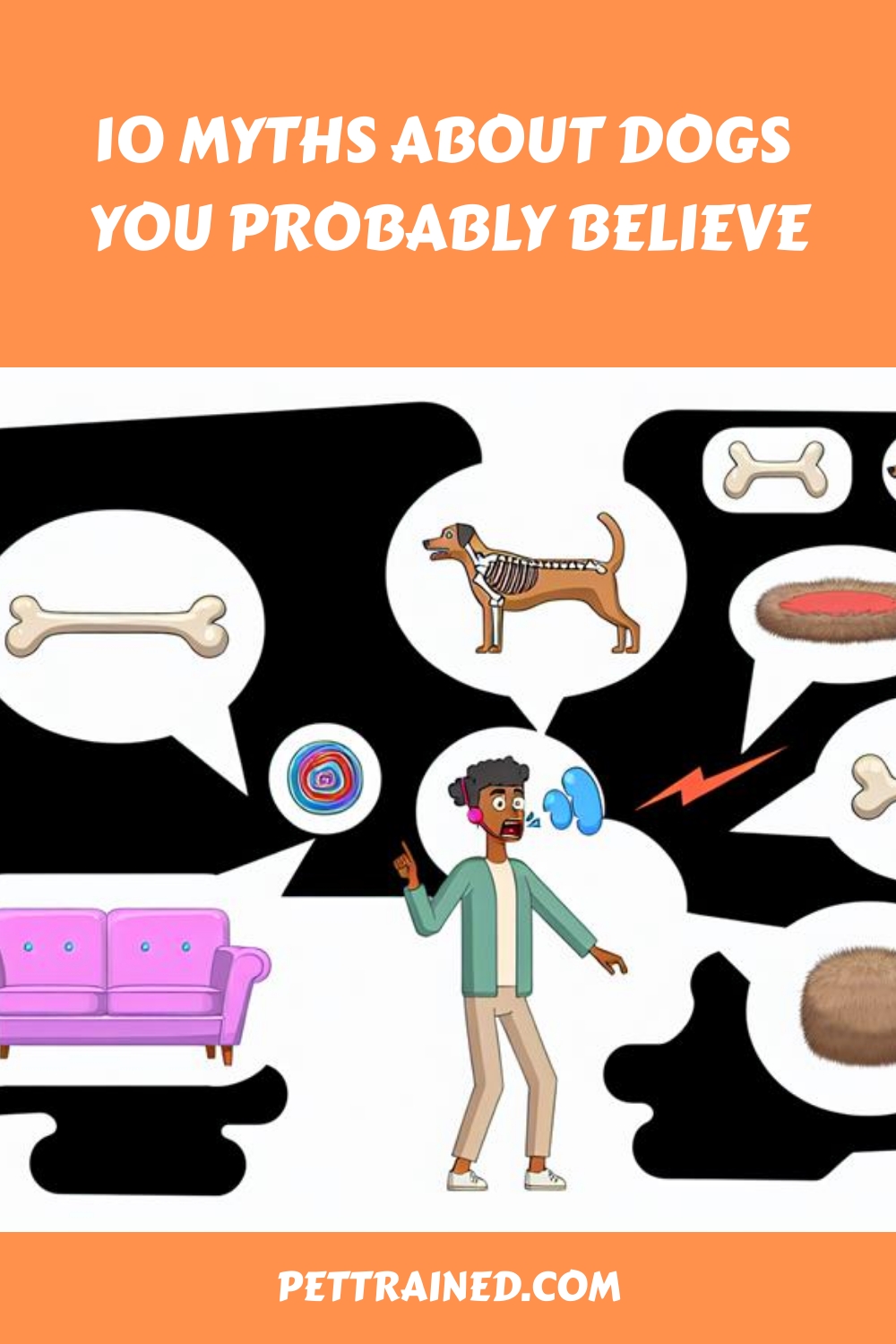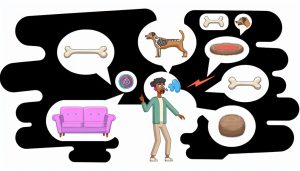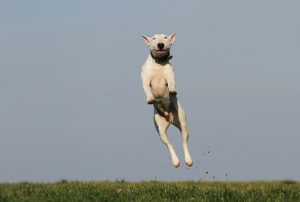You might think you know all there is about dogs, but many common beliefs about our furry friends are actually myths.
For example, you’ve probably heard that dogs see the world in black and white or that a wagging tail always means they’re happy.
These misconceptions can impact how you care for and interact with your dog.
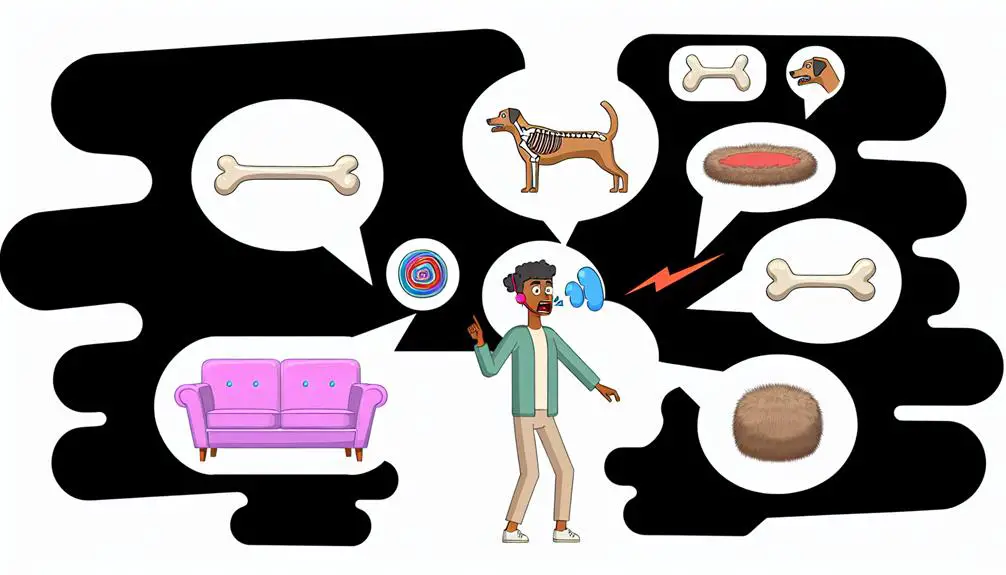
So, what if these widely accepted truths are not accurate?
By uncovering the real facts, you can guarantee a healthier and more fulfilling relationship with your pet.
Ready to challenge what you thought you knew about dogs?
This post contains affiliate links. However all the information provided on this site are my own honest opinions. See more in Disclaimer.
Table of Contents
1. Dogs See in Black and White

Contrary to popular belief, dogs don’t see the world in black and white but have a limited color vision similar to red-green color blindness in humans.
Their color perception isn’t as extensive as ours, but they can still distinguish between various hues. Dogs have two types of color receptors, or cones, in their eyes, enabling them to see shades of blue and yellow.
This means that within their visual spectrum, colors like red and green appear more muted or greyish. Understanding your dog’s color perception can help you choose toys and training tools that are easier for them to see.
By recognizing that dogs perceive colors differently, you can better cater to their visual needs and enhance their overall experience.
2. Wagging Tail Means Happiness

While understanding a dog’s color perception is important, it’s equally vital to recognize that a wagging tail doesn’t always signify happiness. Tail language in dogs is complex and reflects a range of canine emotions.
For instance, a high, stiff wag often indicates alertness or agitation, while a slow, low wag can signify insecurity or submission. Fast, broad tail movements typically suggest excitement or friendliness, but context matters.
Observe the dog’s overall body language and environment to accurately interpret their feelings. Misreading a wagging tail can lead to misunderstandings and unsafe interactions.
3. Dogs Eat Grass When Sick

Many people believe that dogs eat grass solely because they’re feeling sick. However, this behavior is more complex and not always linked to illness.
Dogs may eat grass to fulfill a need for certain nutrients or fiber that their regular diet lacks. Grass nutrition includes essential fibers that can aid digestion.
Additionally, this behavior is instinctive and rooted in their ancestry. Wild canines, like wolves, often consume the entire prey, including the plant-filled stomach contents. This instinctive behavior might drive domesticated dogs to munch on grass.
While occasional grass-eating is generally harmless, frequent or excessive consumption might indicate dietary deficiencies or other health issues. Always consult your vet if you’re concerned about your dog’s eating habits.
4. One Human Year Equals Seven Dog Years

The common belief that one human year equals seven dog years oversimplifies a dog’s aging process and doesn’t accurately reflect their growth stages. This age calculation method is a popular lifespan myth that fails to take into account factors like breed size and genetics.
Here are four key points to understand:
- Rapid Early Development: Dogs age much faster in their early years. A one-year-old dog can be equivalent to a 15-year-old human.
- Breed Differences: Larger breeds tend to age faster and have shorter lifespans compared to smaller breeds.
- Middle Age Slowdown: After the initial rapid growth, dogs’ aging rates slow down.
- Individual Variability: Just like humans, dogs have unique aging processes influenced by their health and lifestyle.
Understanding these factors provides a more accurate picture of your dog’s age and health.
5. Dogs Only Understand Simple Commands

Contrary to popular belief, dogs are capable of understanding a wide range of commands and even complex instructions. Canine cognition research shows that dogs possess impressive command comprehension skills.
They can learn hundreds of words, interpret human gestures, and even understand the context behind certain commands. Studies indicate that dogs can follow multi-step instructions and adapt to new tasks quickly.
This advanced level of comprehension isn’t limited to basic commands like ‘sit’ or ‘stay.’ With proper training, dogs can understand more intricate commands, such as ‘find the keys’ or ‘close the door.’
The depth of a dog’s understanding highlights their cognitive abilities, proving that they’re far more intelligent and trainable than many people assume.
6. Mixed Breeds Are Healthier

It’s widely believed that mixed breed dogs generally experience better health than purebred dogs due to their genetic diversity and potential for hybrid vigor. The broader gene pool in mixed breeds can lower the risk of inherited diseases, although this isn’t a guarantee.
Regular veterinary care is essential for all dogs, regardless of their breed, to ensure their well-being.
Each dog is unique, and health outcomes can’t be solely predicted based on their breed. Both mixed breed and purebred dogs benefit from proper care and attention.
7. Dogs’ Mouths Are Cleaner Than Humans’
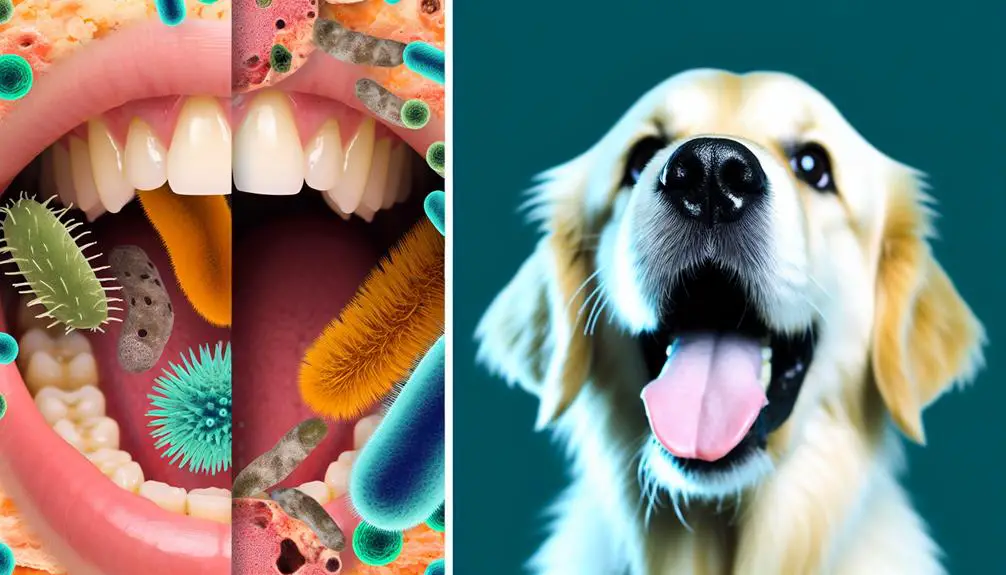
Many people believe that dogs’ mouths are cleaner than humans’, but scientific studies reveal a more complex reality.
When you compare the bacterial load, dogs’ mouths host a variety of bacteria different from those found in human mouths.
The concept of oral hygiene varies between species, but neither is inherently cleaner.
While dogs have fewer cavities due to their diet and tooth structure, they can harbor harmful bacteria like Pasteurella and Capnocytophaga, which can cause infections in humans.
On the other hand, human mouths are prone to bacteria like Streptococcus mutans, which leads to cavities.
8. Rubbing Nose in Mess Prevents Accidents

Despite common beliefs, rubbing a dog’s nose in its mess isn’t an effective way to prevent future accidents. In fact, it can lead to confusion and anxiety, making house training more difficult. Positive reinforcement, on the other hand, is a better and kinder approach. Here’s why:
Immediate Feedback: Dogs learn best when they receive rewards for their actions, so be sure to praise them when they go outside.
Trending in Dogs:
Reduces Fear: Positive reinforcement helps build trust and reduces anxiety in dogs, unlike punishment which can instill fear.
Clear Communication: Rewarding desired behaviors helps dogs understand what’s expected of them, making training more effective.
Fosters Bonding: Encouraging good behavior through positive reinforcement strengthens the bond between you and your dog.
9. Certain Breeds Are Naturally Aggressive

While positive reinforcement can shape a dog’s behavior effectively, it’s a myth that certain breeds are naturally aggressive. Breed temperament varies, but no breed is innately hostile.
Studies show that a dog’s behavior is influenced more by its environment and training than its genetic makeup. The socialization impact is vital; dogs exposed to diverse experiences, people, and other animals from a young age tend to be more well-adjusted.
Aggression often stems from fear or lack of proper socialization, not from breed-specific traits. Labeling a breed as aggressive overlooks the individual dog’s upbringing and environment.
Proper training and socialization can help any dog develop a balanced temperament, regardless of its breed.
10. Dogs Don’t Need Dental Care
It’s a common misconception that dogs don’t need dental care. Just like humans, dogs are susceptible to tooth decay and gum disease.
Neglecting your dog’s dental health can lead to serious health issues. Here are four reasons why you should prioritize your dog’s dental care:
- Prevents Tooth Decay: Regular brushing and dental check-ups reduce the risk of cavities.
- Avoids Gum Disease: Plaque build-up can cause gingivitis and periodontitis, leading to painful infections.
- Enhances Overall Health: Poor dental hygiene can affect your dog’s heart, liver, and kidneys.
- Improves Quality of Life: Healthy teeth and gums mean less pain and more enjoyment of food.
Don’t underestimate the importance of dental care for your furry friend.
